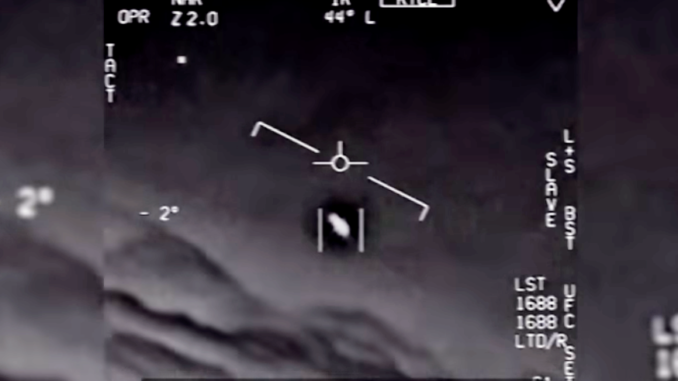
For decades, I’ve been a stone cold skeptic of UFOs. That hasn’t kept me from being a fan of movies like Close Encounters of the Third Kind, Independence Day, and Signs, among many others, including the original version of The Thing, and Predator (as long as we’re talking movies about alien encounters on Earth). The probability that life exists elsewhere in the universe, even in our own galaxy, is mathematically a certainty given the enormous numbers of stars and planets out there. I believe aliens must exist, but their home planets must also be far away: therefore I think it highly unlikely that any civilization wishing to visit us actually could, given the barrier presented by the speed of light. As in, you can’t travel faster than the speed of light, or at least we can say no human is anywhere close to proving it’s possible despite certain theories that have been put forward recently.
Skepticism hasn’t kept me from finding articles about the Pentagon’s UAP (Unidentified Aerial Phenomena) mystery interesting, either. My initial reaction to the leaks of videos showing an US Navy fighter aircraft FLIR (Forward Looking Infrared) sensor display locked on an UAP was that the artifacts must be the result of glitches in the software running the instrumentation. Software bugs in radar and other detection systems have, in the past, often been to blame when a false contact was observed by the scope dope (that’s derogatory jargon referring to the radar operator). Most all visual UFO sightings in the past have been demonstrated to be natural or man-made objects, distorted by atmospheric conditions or the lens of a camera or infrared scope.
However, it appears to be clear that the UAPs that everyone’s talking about weren’t just recorded by a single device, but simultaneously tracked and recorded by other sensors as well as witnessed by human eyes. For example, on November 14, 2004, a pair of F/A-18 Super Hornets launched on a training exercise from the USS Nimitz (CVN-68) in a restricted area off of southern California. The restricted area is off-limits to non-military aircraft. During the sortie, the Hornets were asked to check out a radar contact sixty miles distant that the guided missile cruiser USS Princeton (CG-59), equipped with an Aegis AN/SPY-1 advanced radar system, had been tracking for several days. The UAP was tracked and recorded by the Princeton’s radar system operators while simultaneously tracked by the Hornet’s FLIR system, while simultaneously observed by multiple aircrew. That can’t readily be explained away by software errors or atmospheric conditions or the optical aberations of lenses.
Ward Carroll is a retired US Navy officer and F-14 Tomcat RIO (Radar Intercept Officer). If you saw the movie Top Gun, the RIO, or backseater, was portrayed by the character “Goose”. Carroll wrote a book about F-14 operations in the Gulf wars, and he also hosts a popular YouTube channel about Navy flying. In a recent video he did about UAPs, he pointed out that because the objects were seen and recorded in government restricted areas, in his opinion they most likely are highly advanced US aerial vehicles, as classified now as the SR-71, U-2, and other formerly top-secret aircraft were back in the day. He maintains they were observed in a government-restricted zone because that’s where they could be tested with minimal public scrutiny. He continues, the videos were leaked in 2017 on purpose, followed by a bland, inconclusive Pentagon report last month, to keep the public, and possibly other governments, in the dark. While I’m skeptical about this explanation, too, it does seem more likely than any other possibility raised so far.
Question Of The Night: What’s your opinion on the UAP mystery?
